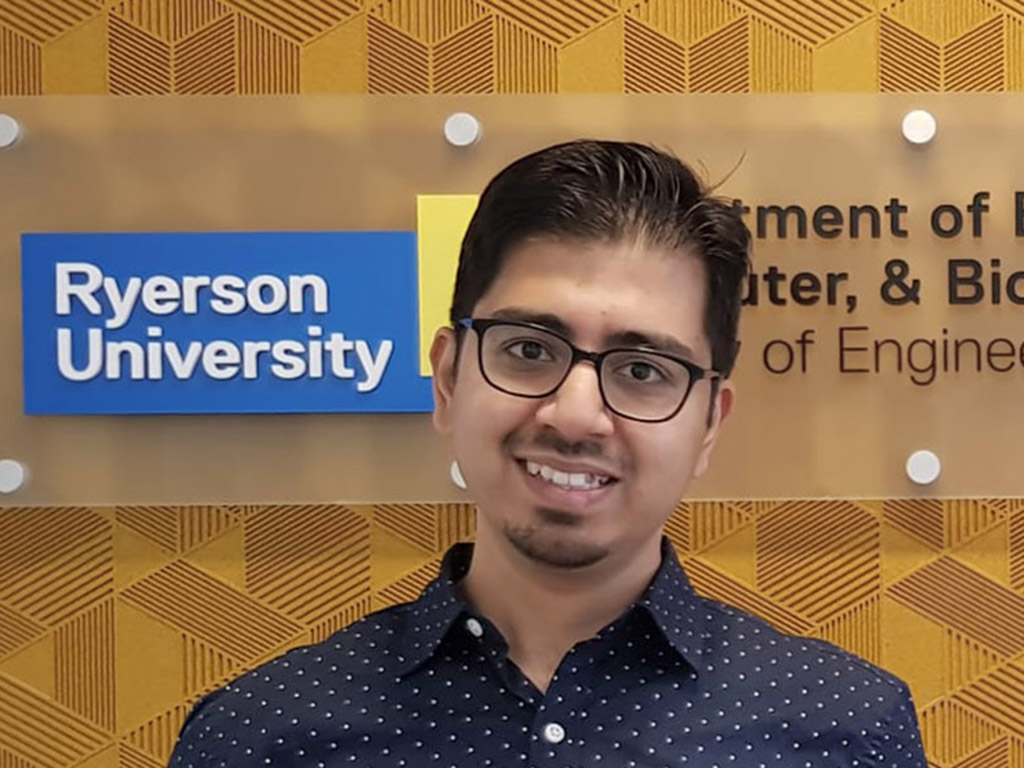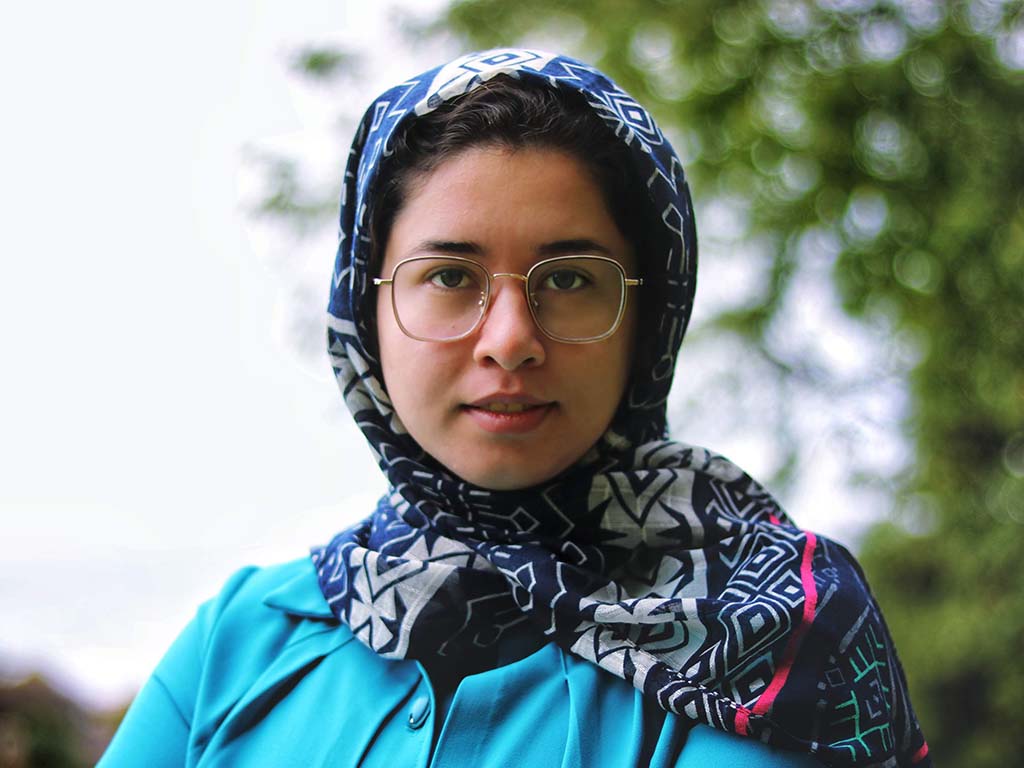Owais Khan’s award-winning research looks to revolutionize heart patients’ healthcare

Owais Khan, assistant professor in the Department of Electrical, Computer and Biomedical Engineering
Cardiovascular diseases, including coronary artery disease, are the leading cause of death worldwide (external link) . Coronary arteries supply heart muscles with oxygenated blood. However, they can become clogged due to risk factors such as obesity, physical inactivity, unhealthy eating and smoking tobacco, leading to lethal heart attacks. Accurately predicting coronary blood flow can help clinicians diagnose and determine the most effective treatment for heart disease patients.
To this end, Owais Khan, assistant professor in the Department of Electrical, Computer and Biomedical Engineering, is working to improve existing computational simulation models used in coronary artery analysis and treatment strategies. Through his research project, “Healing Broken Hearts with Computer Simulations,” Khan’s team has demonstrated that existing coronary artery simulation methods can lead to errors of up to 40 percent compared to measurements evaluated within a living body. “These findings motivate us to improve existing computer models so they can predict coronary blood flow with higher accuracy,” said Khan.
Additionally, Khan is developing virtual methods to supplement or enhance advanced imaging techniques, such as computed tomography angiography (CTA), that directly measure a patient’s blood flow perfusion. “A key challenge of using dynamic CTA perfusion is the high radiation dosage transmitted to the patient and the need to design imaging protocols carefully,” said Khan.” The virtual perfusion models may allow us to get similar maps without radiation exposure to the patients.”
The following illustration shows how Khan’s team captures images of patients’ hearts and blood vessels and reconstructs them as 3D computer models:
-Image-Registration_body.jpeg)
1. Image registration
-Ventricle-Segmentation_body.jpeg)
3. Ventricle segmentation
-Anatomic-Segmentation_body.jpeg)
2. Anatomic segmentation
-Territory-Mapping_body.jpeg)
4. Territory mapping
“The most rewarding aspect of this project is the direct link between our research and patients, especially having met some patients whose imaging data we collected,” said Khan. He believes this data, gathered from multiple sources, is a key strength of his research as it reflects the natural variability among research centres’ imaging protocols and methods.
Khan’s project won the 2021 Mitacs and Banting Research Foundation Discovery Award (external link) , a one-year grant for outstanding new investigators. “We hope the discoveries we make through the support of this award ultimately improve the treatments and outcomes of patients with heart disease,” said Khan. The Banting award has supported Khan’s group to recruit the next generation of scientists working towards improved diagnostic tools and treatment strategies for heart disease patients.

Anahita Seresti, a first-year PhD candidate in biomedical engineering
The lead student on Khan's project is Anahita Seresti, a first-year PhD candidate in biomedical engineering who gained funding through the FEAS Graduate Scholarship. “Dr. Khan’s research is innovative and interesting, and I am confident it will open the door to new opportunities,” said Seresti. “He is a committed and supportive supervisor.”
FEAS has been a pillar of support for Khan throughout his research process. “My department chair, Dimitri Androutsos, provided an extraordinary letter of support detailing the valuable resources available within our department and FEAS in general, including facilities available through the iBEST (external link) partnership with St. Michael’s Hospital,” said Khan. In addition, Sanja Obradovic and the university’s grants and contracts team offered critical feedback throughout the grant writing and submission process, and professor and former associate dean Sri Krishnan serves as a mentor.